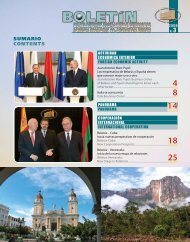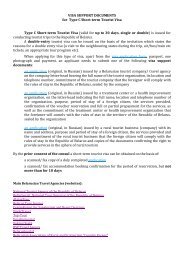TABLE 3.1Selected developing countries that registered large reductions in HDI shortfall orhigh rates of growth in gross national income per capita, 1990–2012CountryHDI(value)Reduction inHDI shortfall aAverage annual growthin gross nationalincome per capita(%) Rank (%) Rank1990 2012 1990–2012 1990–2012Korea, Rep. 0.749 0.909 63.6 1 4.2 8Iran, Islamic Rep. 0.540 0.742 43.9 2 2.5 32China 0.495 0.699 40.5 3 9.4 1Chile 0.702 0.819 39.4 4 3.8 13Saudi Arabia 0.653 0.782 37.3 5 0.4 77Argentina 0.701 0.811 36.9 6 3.5 18Malaysia 0.635 0.769 36.6 7 3.6 17Tunisia 0.553 0.712 35.6 8 2.9 29Turkey 0.569 0.722 35.5 9 2.5 33Qatar 0.743 0.834 35.3 10 3.2 22Mexico 0.654 0.775 35.0 11 1.3 58Algeria 0.562 0.713 34.4 12 1.0 69Panama 0.666 0.780 34.3 13 3.9 11Brazil 0.590 0.730 34.1 14 1.7 50Brunei Darussalam 0.782 0.855 33.4 15 –0.4 87Viet Nam 0.439 0.617 31.8 21 5.9 3Mauritius 0.626 0.737 29.8 25 3.6 14Dominican Republic 0.584 0.702 28.3 28 3.9 12Myanmar 0.305 0.498 27.8 30 7.9 2Sri Lanka 0.608 0.715 27.3 31 4.4 7Guyana 0.502 0.636 26.7 36 5.3 4Lao PDR 0.379 0.543 26.5 39 4.4 6India 0.410 0.554 24.5 45 4.7 5Bangladesh 0.361 0.515 24.1 47 3.9 10Trinidad and Tobago 0.685 0.760 23.9 49 3.6 15Mozambique 0.202 0.327 15.6 72 4.1 9a. Reduction in the distance from the maximum HDI score.Note: Based on a balanced panel of 96 developing countries.Source: HDRO calculations.except Iran and the Republic of Korea. TheRepublic of Korea, despite lower economicgrowth than China, had the biggest gains inHDI value. Viet Nam also fared well, rankingthird in income growth and among the top20 in HDI improvement. Sri Lanka, too, hashad high income growth as well as a notablereduction in HDI shortfall despite years ofinternal conflict. 4India’s economic performance has also beenimpressive, averaging nearly 5% income growtha year over 1990–2012. Nevertheless, India’sper capita income is still low, around $3,400 in2012; to improve living standards, it will needfurther growth, since it is difficult to achievemuch poverty reduction through redistributionalone at low income. India’s performancein accelerating human development, however,is less impressive than its growth performance.Indeed, Bangladesh, with much slower economicgrowth and half India’s per capita income,does nearly as well—and better on someindicators.Among the top 15 countries in reducingHDI shortfall are Algeria, Brazil and Mexico,even though their growth in income per capitaaveraged only 1%–2% a year over 1990–2012. Their experience points to the secondbroad strategy that has paid human developmentdividends: giving primacy to state investmentin people’s capabilities—especiallytheir health, education and nutrition—andmaking their societies more resilient to economic,environmental and other threats andshocks.There is a lesson here: countries cannotrely on growth alone. As the 1993 and 1996<strong>Human</strong> <strong>Development</strong> <strong>Report</strong>s argued, the linkbetween growth and human development isnot automatic. 5 It needs to be forged throughpro-poor policies by concurrently investing inhealth and education, expanding decent jobs,preventing the depletion and overexploitationof natural resources, ensuring genderbalance and equitable income distributionand avoiding unnecessary displacement ofcommunities.This is not to say that economic growth doesnot matter. Poor countries with many poorpeople need higher incomes. At the nationallevel, faster growth can enable countries to reducedebts and deficits and generate additionalpublic revenues to step up investment in basicgoods and services, especially in health andeducation. And at the household level, incomegrowth helps meet basic needs, improve livingstandards and enhance quality of life.Nevertheless, higher income does not necessarilyproduce a corresponding improvement in64 | HUMAN DEVELOPMENT REPORT <strong>2013</strong>
human well-being. Populations in large cities,for example, typically report high income percapita, but they also have high levels of crime,pollution and traffic congestion. In rural areas,farming households may see income grow whilelacking a village school or health centre. Initialconditions have considerable influence on thepace of countries’ current and future development.Nonetheless, they are not the only thingsthat matter (box 3.1).In fact, the links between economic growthand human development have snapped severaltimes. The 1996 <strong>Human</strong> <strong>Development</strong> <strong>Report</strong>identified six unwelcome types of growth: joblessgrowth, which does not increase employmentopportunities; ruthless growth, whichis accompanied by rising inequality; voicelessgrowth, which denies the participation of themost vulnerable communities; rootless growth,which uses inappropriate models transplantedfrom elsewhere; and futureless growth, whichis based on unbridled exploitation of environmentalresources. 6What accounts for the superior generationof growth and its conversion into humandevelopment? What are the policy lessonsfrom the diverse human development experiencesof these countries? Indeed, what arethe drivers of transformation? This chapteridentifies three:• A proactive developmental state.• Tapping of global markets.• Determined social policy innovation.These drivers are not derived from abstractconceptions of how development should work;rather, they are demonstrated by the transformationaldevelopment experiences of manycountries in the South. Indeed, they challengepreconceived and prescriptive approaches: onthe one hand, they set aside a number of collectivist,centrally managed precepts; on theother hand, they diverge from the unfetteredliberalization espoused by the WashingtonConsensus.These drivers suggest an evolution towards anew approach, in which the state is a necessarycatalyst that pragmatically adjusts its policiesand actions in line with new realities and thechallenges of global markets. This new perspectiverecognizes that development does nothappen automatically and that transformationcannot be left to markets alone. Instead, theThis chapter identifiesthree drivers oftransformation: aproactive developmentalstate, tapping of globalmarkets and determinedsocial policy innovationBOX 3.1History and initial conditions matter, but they are not destiny“Initial conditions” have profound impacts, as certain characteristics arenot only difficult to change, but also often perpetuated by institutions andpolicies. In societies that began with high inequality, elites can establish alegal framework that locks in their influence, which in turn enables them tomaintain high inequality to their benefit. Take, for example, the Americas,where three distinct types of colonies took shape in the 1700s, dependingon the initial conditions of soil, climate and native inhabitancy.In the Caribbean, soil and climate made colonies suited for the productionof large-scale lucrative commodities. The distribution of wealthand human capital was extremely unequal, advantaging the elite whocould assemble large companies of slaves. In Spanish America, abundantin minerals and natives, authorities distributed land resources tothe Spanish colonists. Elites served the Spanish crown and maintainedtheir status after independence. Income inequality persisted across raciallines, with ownership of large tracts of land being a requirement forcitizenship. In Peru today, as in many other countries, severe horizontal inequalitiespersist between indigenous populations and those of Europeandescent. In the northern parts of the Americas the native population wasnot abundant, and soil and climate did not lend themselves to economiesof scale. Thus, there was reliance on labourers of European descent withhigh human capital and more equal distribution of wealth. Because ofabundant land and low capital requirements, most adult men operated asindependent proprietors.Haiti today is the poorest country in the Western Hemisphere. On theeve of its revolution in 1790, it was probably the richest country in theNew World. Similarly, after the Seven Years War between the British andthe French (1756–1763), the British debated whether to take Canada orGuadeloupe as reparation. Several centuries later the former proved to bemore successful than other economies in the hemisphere.Yet history and initial conditions are not insurmountable barriers. Abouthalf the progress in development, measured by the HDI, over the past 30years is unexplained by the initial HDI value in 1980. Countries that start ata similar level—such as India and Pakistan, Chile and Venezuela, Malaysiaand the Philippines, or Liberia and Senegal—have ended up with differentoutcomes. As the 2010 <strong>Human</strong> <strong>Development</strong> <strong>Report</strong> argued, if countrieswith similar starting points go on divergent development paths, but averageglobal achievements have not changed, we can infer that it is national forcespolicies, institutions, social context and idiosyncratic shocks that drivenational development outcomes. No country remains a prisoner of historyfor long if it wants to break out.Source: Engerman and Sokoloff 2002; Hoff 2003; Thorp and Paredes 2011; <strong>UNDP</strong> 2010a.Chapter 3 Drivers of development transformation | 65
- Page 1 and 2:
WNSEHuman DevelopmentReport 2013The
- Page 3 and 4:
Human Development Report 2013The Ri
- Page 5 and 6:
Human Development Report 2013 TeamD
- Page 7 and 8:
Finally, the Report also calls for
- Page 9 and 10:
Heather Simpson, Ben Slay, Mounir T
- Page 11 and 12:
3.6 India’s Supreme Court issues
- Page 13 and 14:
OverviewOne of the most heartening
- Page 15 and 16:
and sustainability are fully incorp
- Page 17 and 18:
Without investment in people, retur
- Page 19 and 20:
opportunity to reap the full benefi
- Page 21 and 22:
Woods institutions, the United Nati
- Page 23 and 24:
IntroductionWhen developed economie
- Page 25 and 26: leading economies—Brazil, China a
- Page 27 and 28: comparable access to information, e
- Page 29 and 30: mobile phones: cellular banking is
- Page 32 and 33: “The political problem ofmankind
- Page 34 and 35: BOX 1.1Fairness, macroeconomics and
- Page 36 and 37: BOX 1.3Amartya Sen, Nobel Laureate
- Page 38 and 39: FIGURE 1.1Income per capita is risi
- Page 40 and 41: BOX 1.4Subjective indicators of wel
- Page 42 and 43: FIGURE 1.4There is notable variatio
- Page 44 and 45: FIGURE 1.6Most regions show declini
- Page 46 and 47: Progress in humandevelopment achiev
- Page 48 and 49: BOX 1.7Social competencies: human d
- Page 50 and 51: TABLE 1.3Inequality and satisfactio
- Page 52 and 53: Not all countries havethe precondit
- Page 54 and 55: “When the music changes,so does t
- Page 56 and 57: BOX 2.1The South’s integration wi
- Page 58 and 59: FIGURE 2.1As a share of world merch
- Page 60 and 61: BOX 2.2Acquisitions by the South of
- Page 62 and 63: FIGURE 2.3Between 2000 and 2010, In
- Page 64 and 65: FIGURE 2.4Export earnings per capit
- Page 66 and 67: BOX 2.6Final assembly is about more
- Page 68 and 69: Instead of having a centreof indust
- Page 70 and 71: FIGURE 2.6Emerging market economies
- Page 72 and 73: Developing countriestrade more amon
- Page 74 and 75: “We cannot expect thatall nations
- Page 78 and 79: A common featureof countries thatha
- Page 80 and 81: More important thangetting prices r
- Page 82 and 83: BOX 3.5Eastern Europe and Central A
- Page 84 and 85: States have to beconscious that the
- Page 86 and 87: As countries develop,they tend to d
- Page 88 and 89: Having weathered theAsian financial
- Page 90 and 91: Providing publicservices that contr
- Page 92 and 93: Advancing health requiresmore than
- Page 94 and 95: Universal public healthand educatio
- Page 96 and 97: • China. The Minimum Livelihood G
- Page 98 and 99: “Each generation will reap whatth
- Page 100 and 101: concerns will make for a complex en
- Page 102 and 103: A greater emphasison education cans
- Page 104 and 105: FIGURE 4.1Under the fast track scen
- Page 106 and 107: Around the worldpeople are calling
- Page 108 and 109: FIGURE 4.4Different environmental s
- Page 110 and 111: FIGURE 4.5Education policies can al
- Page 112 and 113: BOX 4.2China and Ghana: who benefit
- Page 114 and 115: FIGURE 4.8countries thus converge t
- Page 116 and 117: “Let us join hands to try tocreat
- Page 118 and 119: Areas of globalinternational concer
- Page 120 and 121: Addressing climatechange requires t
- Page 122 and 123: International governanceis increasi
- Page 124 and 125: BOX 5.2Jo Leinen, Member of the Eur
- Page 126 and 127:
facilitates reserve investments and
- Page 128 and 129:
Responsible sovereigntytakes the lo
- Page 130 and 131:
FIGURE 5.1Under the accelerated pro
- Page 132 and 133:
Good policymakingrequires greater f
- Page 134 and 135:
A fair and less unequalworld requir
- Page 137 and 138:
NotesOverview1 Atsmon and others 20
- Page 139 and 140:
25 Blinder 2006.26 UNIDO 2009.27 UN
- Page 141 and 142:
which is 61.7 deaths per 1,000 live
- Page 143 and 144:
ReferencesAbdurazakov, A., A. Minsa
- Page 145 and 146:
urban_world_cities_and_the_rise_of_
- Page 147 and 148:
Kamau, P., D. McCormick, and N. Pin
- Page 149 and 150:
Labor Administration. Geneva: Inter
- Page 151 and 152:
Human Development Report 2013The Ri
- Page 153 and 154:
Statistical acknowledgementsThe Rep
- Page 155 and 156:
Key to HDI countries and ranks, 201
- Page 157 and 158:
Human Development Report 2013The Ri
- Page 159 and 160:
Human Development Report 2013The Ri
- Page 161 and 162:
Human Development Report 2013The Ri
- Page 163 and 164:
Human Development Report 2013The Ri
- Page 165 and 166:
Human Development Report 2013The Ri
- Page 167 and 168:
Human Development Report 2013The Ri
- Page 169 and 170:
Human Development Report 2013The Ri
- Page 171 and 172:
Human Development Report 2013The Ri
- Page 173 and 174:
Human Development Report 2013The Ri
- Page 175 and 176:
Human Development Report 2013The Ri
- Page 177 and 178:
Human Development Report 2013The Ri
- Page 179 and 180:
Human Development Report 2013The Ri
- Page 181 and 182:
Human Development Report 2013The Ri
- Page 183 and 184:
Human Development Report 2013The Ri
- Page 185 and 186:
Human Development Report 2013The Ri
- Page 187 and 188:
Human Development Report 2013The Ri
- Page 189 and 190:
Human Development Report 2013The Ri
- Page 191 and 192:
Human Development Report 2013The Ri
- Page 193 and 194:
Human Development Report 2013The Ri
- Page 195 and 196:
Human Development Report 2013The Ri
- Page 197 and 198:
Human Development Report 2013The Ri
- Page 199 and 200:
Human Development Report 2013The Ri
- Page 201 and 202:
Human Development Report 2013The Ri
- Page 203 and 204:
Human Development Report 2013The Ri
- Page 205 and 206:
Human Development Report 2013The Ri
- Page 207 and 208:
Human Development Report 2013The Ri
- Page 209 and 210:
Human Development Report 2013The Ri
- Page 211 and 212:
Statistical referencesADB (Asian De
- Page 213 and 214:
Core features of the model pertinen
- Page 215 and 216:
Countries and HDI ranks in 2012 and
















